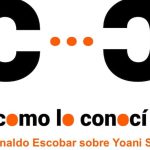Rural normals. With a just ideology and awareness of its noble mission
Q
to understand the movement university of 1968 in Mexico, it is necessary to consider the political, cultural and social events, the protests and revolts that were experienced during that decade around the world, particularly the growing authoritarianism in Latin America, which sought to eradicate any manifestation with an air of freedom that had a communist taint. . Militarism deployed as a determining mechanism in foreign interference, the rise of cold warthe Vietnam War and all the demonstrations of rejection, but also, the student protests such as the French May and the fight for university reform in Chile, among others.
In this context, although the study of this phenomenon has historically focused on the events that occurred in Mexico City, where in addition to students from the UNAM and the Polytechnic, housewives, professionals, intellectuals and workers participated; The truth is that teachers and students from normal schools, particularly rural ones, also played a prominent role, as Marcelo Hernández Santos has documented in Reform times.
The involvement and positioning of the rural normalistas makes sense as we identify the activism that they had been developing since the previous months as a result of the lack of attention to their own demands. When we approach the dynamics of those months in some rural normal schools, we find that while those of Saucillo and Salaices, in Chihuahua, began January 1968 with a lack of teachers, a warehouseman, three laundresses and workers for the fields – as pointed out by José Santos Valdés–, in the similar Cañada Honda, Aguascalientes, it would be since the last days of February when the Society of Students Amalia Solórzano de Cárdenas
had begun a strike with the purpose of demanding the government’s attention in solving historically neglected demands, such as food, the creation and equipment of spaces for their preparation or the lack of adequate personnel for their training as rural teachers.
According to a statement from the student society to the management of that school, the lack of attention to their demands was compelling proof of the authorities’ interest in the rural student body has an incomplete preparation, denying the necessary means required for the improvement of this and the people themselves.
. An improvement that It won’t end until your problems are resolved favorably.
they sentenced.
Although to reach this situation they had gone through staggered strikes, which were made known to the authorities along with the delivery of a list of requests, as happened on February 16, 18 and 22, 1968, the truth is In response, the authorities used one of the most popular strategies in those years: exposing the students to society, pointing them out as intransigent. This motivated the involvement of the parents, which seems to have influenced the conflict to be finally resolved on March 10 with promises of improvement in the conditions of the boarding school.
Months later, considering that the commitments of the educational authority had not been respected, the students of Cañada Honda called for new strikes of activities although, in this case, in addition to presenting their own demands, they also expressed their solidarity with the students of the Mexico City for the events of July 22 and 23, after the persecution by grenadiers of students from vocational courses 2 and 5 of the National Polytechnic Institute. A situation that gave rise to the IPN-UNAM alliance that turned it into a student movement that would fight for university autonomy and a petition that included the freedom of all political prisoners, the dismissal of police chiefs and the disappearance of the grenadier corps.
Months before and even after the saddest night in Tlatelolco, peasant students carried out activities to publicly condemn the government’s aggressions and show their solidarity with the university movement. After the events of July, the students of Cañada Honda had carried out important dissemination work among the Aguascalientes population; On the other hand, according to information from a local newspaper, on October 3, a group of students that did not reach 200 had gathered in a meeting to inform the population and demand that the authorities clarify the atrocious events.
The group in question was made up of students from La Huerta, Michoacán, some from the similar one from San Marcos, Zacatecas, as well as the students from Cañada Honda themselves. The student demonstration took place with a tour of some streets in the city center where they shouted slogans such as Press sold, press sold!
Books yes, bayonets no!
This activity concluded with a rally where, in addition to singing the National Anthem, the speakers reaffirmed their support for the university movement and denounced the lack of compliance by local authorities with their demands.
With these elements, in addition to recognizing the prominence of rural normal schools in cyclical moments, we can affirm that, from the subalternity, the students of these schools continue to be trained according to the description established in Groovea newspaper from Morelos in November 1937, with a just ideology and awareness of its noble mission.
* Professor-researcher. Justo Sierra Méndez rural normal school, Cañada Honda, Aguascalientes, Mexico.














